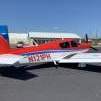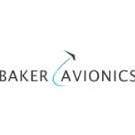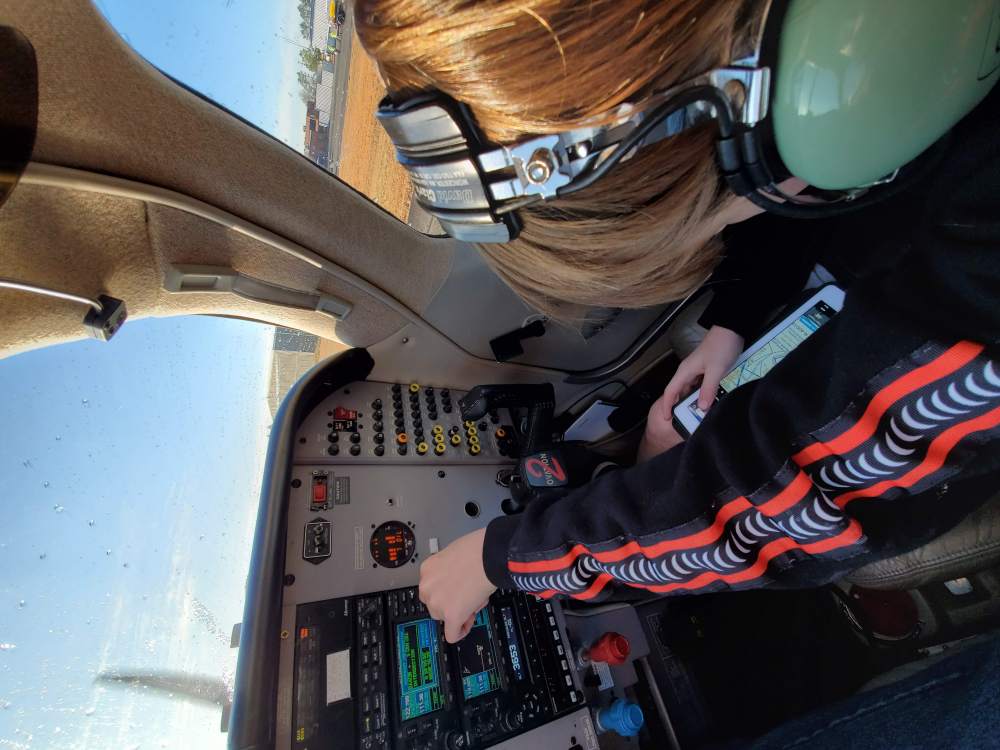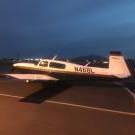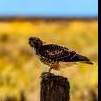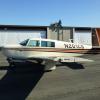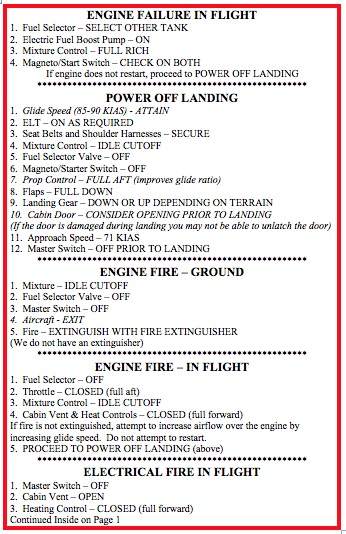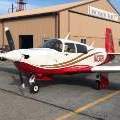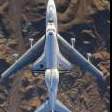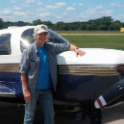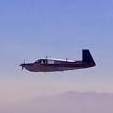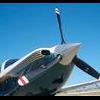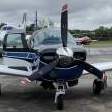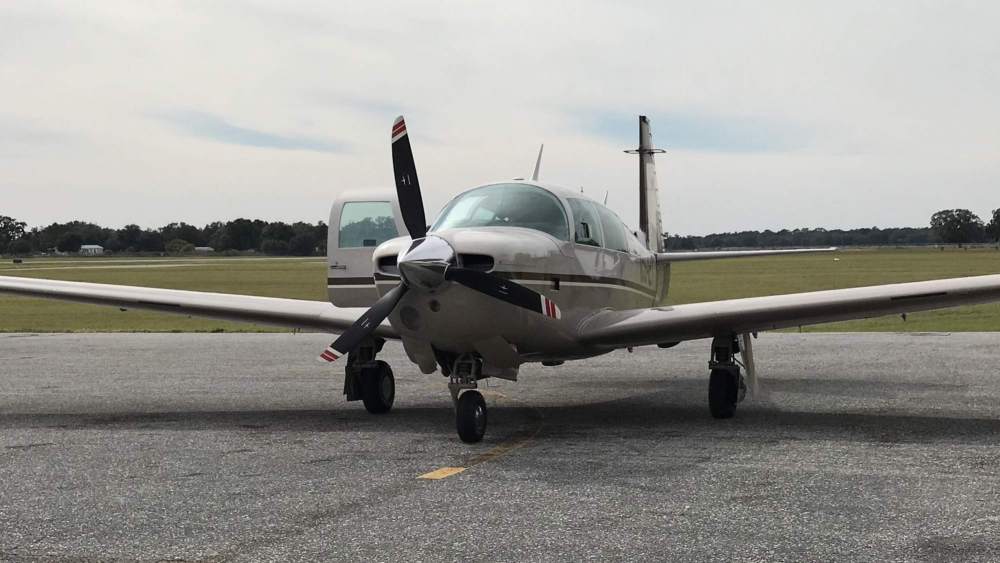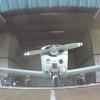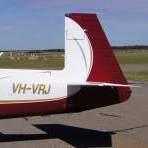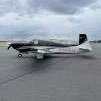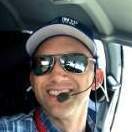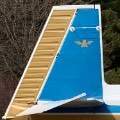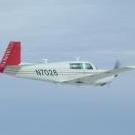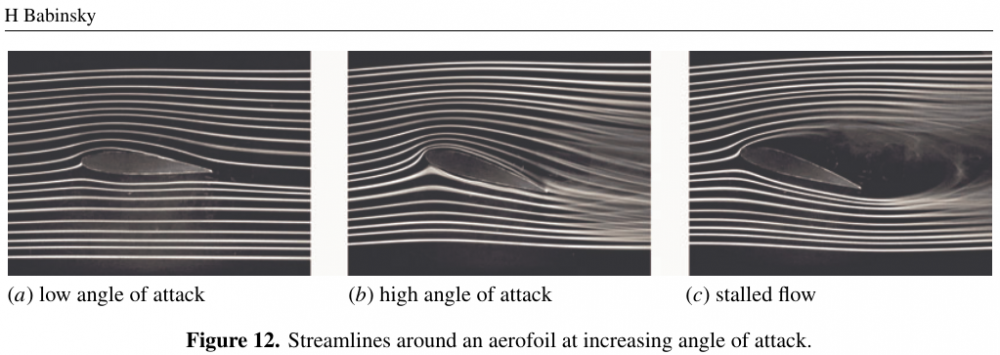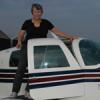Leaderboard
Popular Content
Showing content with the highest reputation on 12/27/2019 in all areas
-
Hi everyone. Just got my brand new Mooney Acclaim Ultra Ceramic coated. It is beautiful. Perry https://youtu.be/5SNUSGOeMmI9 points
-
Dynon- $30k installed with engine monitor w/o AP (high side, all options to include Syn Viz, blah blah blah) NGT9000R- $7k installed PM450B- $3500 installed Avidyne IFD540 and 440- $30k installed TruTrak/AeroCruze 100- $11.5k installed $82,000.00 GTN 750 and 650- $30k installed FlightStream 510- $1500 GMA35c- $3500 installed GFC500- $13k installed (2 Axis) GTX345- $7500 installed G3x- approx. $20-25k installed (Depending on options, hard to estimate on specifics) $80,500.00 I believe the other units were referenced, as far as pricing is concerned, earlier in the thread. It really depends on how much you are getting your equipment for. Now, the Dynon has a built in ADS-B system(if you wanted to use it's integral one), you seemed to also have left out the WiFi and BT capability for the GTN series as you would like to have that because you are trying to upgrade and get maximum capability out of your investment. Your functionality in the comparing Audio Panels are unequaled because the PM450B is far superior. Further, the installation labor is virtually identical so it is a wash, really. So, which will have better functionality, better priced and are better units overall? Well, PS Engineering are the best for Audio Panels, hands down because it is what they do. That IS Mark's business and has been for decades. Dynon has been doing the Avionics Suite for a long time as well in the Experimental market and their price point for what they offer is phenomenal. ADS-B L3 has been doing Traffic and Weather better than anyone else back when their units were BFG. Again, like PS Engineering, they are the best in that market because it is what they do. Now, GTN or IFD? Well, again, my opinion is if you want a top of the line BASIC GPS, go with Garmin, they are the best GPS on the market and always have been. However, I will preface that by saying we are talking about FMS systems in this case and if you want a better FMS, Avidyne leads the way on this, hands down, once again it is what they do best! Not to mention the IFD series comes out of the box with Synthetic Vision, WiFi, Bluetooth and FLTA (Forward Looking Terrain Awareness) all for no extra charge and usually are less than the GTN series. Also, think of the 2 options given here as one is like Apple (Garmin) and the other is like Microsoft (The others). They all play nice together and with pretty much anything. Taking NOTHING away from Garmin, they are getting pretty proprietary and you are being forced to get units that ONLY have their branding on them like iPads and MacBooks. While they are good at what they do, nothing about them is warranted to put them head and shoulders about anyone else because there is really no concentration on anything of theirs anymore. Although the GFC500 is a really good AP, but can ONLY work with a G5. How does that make sense? If you purchase a TruTrak or an S-Tec, you have choices. That is huge, in my book. I have customers that love Garmin and customers that love Avidyne and others. All of them are right and I agree with them and their choices because as long as they are educated, they need to decide what is best for them. I am glad to offer them whatever they decide. The above, though, are just my opinions and reasons behind them. FWIW. Please no throwing of rotten tomatoes, just giving my 2 cents here!!!! Go easy on me! LOL9 points
-
I got a real life reminder yesterday why it is good to periodically review your emergency procedures so that you have them committed to memory for when you need them. I was returning home yesterday in IMC with 900 foot ceilings when I got smoke in the cockpit. Thankfully the circuit breaker quickly did its job and tripped, making the smoke last only a few seconds. But, it was enough to lead me to declare an emergency and to get vectored to the nearest airport for a precautionary landing. In IMC and with smoke coming from the panel is no time to be grabbing for the POH to review what to do or to try to remember which way the retaining clips on the fire extinguisher face. It is also not an ideal time to try to grab and turn on the iPad for back up navigation if you end up turning off the power to the panel (to stop the smoke and prevent a fire). Obviously the autopilot would disengage as well. Thankfully this episode ended well, and I was working through the emergency procedures when the emergency dissipated. But it really got me thinking about what I would have done if I had lost the panel (G1000, radio and autopilot), and had to navigate in IMC and potentially shoot an approach (without ATC and using an iPad), or worse, executing an emergency decent and off airport landing in 900 foot ceilings if there had been a fire. I am posting this in the hopes that it prompts others to review their emergency procedures, to practice accessing their emergency equipment before they need it, and to always your have your backup nav device programmed and in place before take off. You never know when you might need it -- and it may not be on a beautiful VFR day.5 points
-
Hopefully, I'm not the last one to notice that on IFR charts, some airports and navaids are tagged with the letters "MON" in blue reverse highlight. After some digging around, it turns out to stand for "Minimum Operating Network", and the FAA is highlighting certain facilities to have permanent radio navigation aids in case of GPS failure, so if you do lose GPS, you should be able to quickly find a MON facility on your IFR chart. https://www.faa.gov/about/office_org/headquarters_offices/ato/service_units/techops/navservices/transition_programs/vormon/4 points
-
(P)ower setting (A)ttitude and (c)onfiguration. You should have these MP/RPM/Config numbers for your plane to make flying IFR easier so you are not chasing the money knobs to make the plane fly at a certain airspeed in a certain config. The plane will always behave the same with the same settings, and is why emphasis is put on this in IFR training. Take your plane up on a nice day, find out what MP/RPM setting will allow you to fly at the top of the white arc in level flight clean. without touching trim or the money knobs, drop the gear and put in TO flaps, note your decent rate. Most likely, you will find this is all you have to do at GS intercept to follow the GS down without changing a thing4 points
-
A bit of backstory here. Christmastime is a real drag for us heathens. Nothing open, nothing but Christmas stuff on TV. Nothing but Christmas music on the radio. Gets really boring. When I lived in Southern California it was fun. I'd ride my bicycle on the busiest streets and go places I wouldn't dream of on a normal work day. When we lived in DC we went downtown. The museums were all closed, but they didn't close the monuments and no one was there. It was cool. Where I am now there's nothing cool to do on Christmas. Every since I leaned to fly I wanted to take a flight on Christmas. Something cool to do. Nothing has to be open, I can just fly my little airplane and land uncontrolled airstrips. And I never got tot do it. Usually the weather was snot (I'm still VFR), the one year it wasn't there was so much snow and ice chocking the hangar door I couldn't get it open. This year everything lined up. I got great weather, the airplane is working (except of the step, it's DOA but I don't care). So off I went. A few landings, about an hour's worth of flight. After 20 years I flew on Christmas, and it was great.3 points
-
In my bravo I drop the gear at FAF after being at proper power and approach speed and it’s enough to give me a near perfect descent on glide slope. Of course, it’s all about slowing down in advance.3 points
-
From last year's thread on the same topic: Plans for 2019: Visit my Dad in Tennessee and my son in Virginia (moved from Chicago) as often as possible - CHECK Get that awesome arch picture with @skydvrboy - not so much CFI/II accelerated program scheduled for June - CHECK Instruct the three students that are standing in line waiting for me to complete the CFI/II certification - 2 for 3, not so bad Trying for 2nd Caravan but work commitments are dictating otherwise - NOPE 2nd Summit hard scheduled - CHECK Make some more great friends! - CHECK Plans for 2020: Fly. Everywhere. Visit my Dad in Tennessee as often as possible Visit my son in San Diego (man that kid moves a lot...) Continue planning for relocation to Sevierville TN. Flying there in March. And August. And October. Get N1088F Weep-no-Mored in August. Mooney Summit in October N1088F annual at AGL and visit with Bob & Nancy Belville @Bob_Belville after the Summit Continue instructing/flight reviewing in my "spare time" Get that awesome arch picture with @skydvrboy - this is the year Patches! Make some more great friends! Push "forever panel" upgrade out o n e m o r e y e a r... And most importantly - maintaining work/life balance for more time with my awesome wife. Going for 100% this year! Cheers, Rick3 points
-
In my C model days for a looong cross country, I would take-off on the left tank, run for one hour, then switch to the right tank. I would run the right tank dry. This took three hour and maybe a few minutes more. I would switch back to the left tank and land within another hour. I did not have an engine analyzer or fuel flow instrumentation. This gave me a cross check on fuel burn. Before running a tank dry, I had confirmed adequate flow from the other tank. It had the advantage of having all of my remaining fuel in one tank rather than split between two tanks. Using this method was able to fly five-hour legs and land with 12 gallons remaining. Depending on the wind I might go 750 nm or more before landing. I will probably adopt a similar procedure with the J. But with an engine analyzer and fuel flow instrumentation, I know better my remaining fuel.3 points
-
Good post by the OP. However, there are only a few 'emergencies' that need to be memorized. And even those you probably only need to memorize the first few steps. The rest can be handled like the airlines. At Northwest we had a 'red bordered checklist' that sat on the glareshield. It was a single piece of paper. While we don't keep it on the glareshield (but we do keep it someplace that can be easily reached), I created a small booklet that contained all the emergency procedures, normal procedures, and a few other useful bits of information. This is a screenshot of the front page. It contains procedures that I think might require quick action.3 points
-
As usual, I post a year end survey to see how much we have flown for the year - I realize there are a few days left . . . Due my Mooney being down for getting a new propeller, I haven't flown it since early August. Otherwise I would have topped 100 hours in my Mooney. I increased my overall time and flew less Mooney hours unfortunately. I did fly a lot for Open Air this year in Cirrus SR22's. Also, I rented one a few times for planned trips (like Mooney Summit). Over 200 hours in SR22s this year. I also earned my Multi Commercial this year and have logged over 25 hours of multi. I love Aviation and am thankful to have the chance to fly. -Seth2 points
-
Only around 150. Had a lot of downtime this year for maintenance and other things. But I still managed a few big trips like out west, northern Canada, Oshkosh, and more. Spent a bunch of time prepping for and taking the Commercial ASEL.2 points
-
I've used Ultra Leather on some interior panels (window frames) years ago, when converted 2 aft F windows to J style single window. At the same time I restored all plastic with SEM paint and redid the headliner with vinyl and foam. It wasn't difficult but as Andy95W mentioned, ultra leather is not that stretchable to cover all complex surfaces. Window frame had to be done with 4 separate pieces with diagonal cut at the joint and it was sawn together with double stitching. My wife did that and it came out great. All that was glued using 3M adhesive and 12 years after still holds great. Job might take some time depending of how much repair you had to do on the panels but overall not too bad. I did buy two new interior panels (Door and lower pilot side panel) and used a gray Ultraleather for trim piece. I have no picture on my phone to show you but hopefully I can get some in few days. good luck2 points
-
I went the ultra-cheap route and installed a skybeacon (with $500 rebate) on my wingtip with my existing KT-76. IA let me do the work myself and then inspected and signed off my logs, so install cost was $0. For my "in" solution, I built a dual channel Stratux with WAAS GPS and an AHRS for $165. Since everyone is pulling these transponders out and no one is installing them they are available "working when removed" for $100.2 points
-
Thanks, the DME requirement is not for all of us, affects only the largest 75 airports. Is there for redundancy, for commercial/government aircraft. If GPS goes offline, we can aways divert to a class D with ILS.2 points
-
Strip and paint the engine mount. While it's off, take the time to clean/inspect/repair everything on the firewall that is difficult to get to.2 points
-
If the FAA was so concern about GPS they should have kept LORAN-C. There were Navigators with GPS/LORAN capability that would handle GPS failures seamlessly and continue RNAV navigation. After all LORAN-C was easier and cheaper to maintain than GPS, no rockets required but an SUV with a handy technician.2 points
-
Thanks @mike_elliott and @Oldguy! I have that and have it posted on my panel. I've never heard it called that, though. I've been working on my instrument rating too and was slightly paniced that I missed somthing.2 points
-
A little off topic, but you can read hundreds of pages on this forum of people postulating on the viability of a new acclaim and what Mooney *should* produce. It’s great to see someone like yourself who actually bought the best product on the market and is supporting the brand. Congrats on your new plane!2 points
-
Great input guys. Thank you. Mooney is sending me a new something. It looks like that it is a know problem. I have had 6 Mooneys over the last 15 years and never had this problem. This one only has 13 hours on the Hobbs. Perry2 points
-
Not true, the transponder still needs a 91.413 every 24 months. Sent from my iPhone using Tapatalk2 points
-
I haven't had that issue, even in an Ovation. On faster aircraft, I use an additional approach configuration to the standard set. I call it "vectoring" but it's really about being in the approach environment. It's an intermediate step down speed from cruise in preparation for slowing to my FAS speed.2 points
-
Lasar carried both lengths, they were really cheap, lasar was out of stock, checked mooney, they had both lengths and much cheaper. Just got them last week. Dont forget the thin washers Glenn2 points
-
Yes, micro switches go bad. Flew it to MSC at KCHD and they fixed by cleaning switches, no problems 2 years later2 points
-
2 points
-
I used it to cover the window frames and ABS plastic on my Aztec. It works well on convex surfaces, not as well on concave surfaces like my 1964 M20C. For my current airplane, I used headliner felt instead. Contact cement worked very well. The material doesn't really stretch as well as you'd hope, you'll end up cutting darts for every corner and pull the individual pieces around the corners. I covered all of the window frames with 1/8" foam before covering with the Ultra Leather to promote a little more "give" to the material as I stretched it around the corners. For window frames, I used 4 individual pieces, each individually applied, since the material won't stretch enough. I sewed a hem on the horizontal pieces to make it appear that the whole cover was stitched together. A lot of work, but worth it. Sorry I don't have any pictures of my Aztec interior covered in Ultra Leather.2 points
-
I have seen a few of these installed, and what does work on NPT threads is Permatex Aviation sealer. It is non-hardening, and it does dissolve in fuel so it doesn’t find its way to some critical component and cause problems. Teflon tape is a big offender in this regard, it somehow finds its way into a fuel injector or into a main bearing passage, starving or for oil for oil, or the vacuum pump causing failure, either way it’s gotten a few people killed. If it doesn’t get you the first time, then shreds of it remain behind after reassembly the second time and that’s when it gets you, but either way the stuff is a time bomb.2 points
-
I took my signal generator and spectrum analyzer to the hangar today, and hooked them up so that I could send the same signal through a splitter to both the IFD540 and my TKM MX170C at the same time. The signal feeding that splitter was split from the signal generator to also feed the spectrum analyzer to calibrate output power. I checked fourteen different frequencies from 118.4 up to 133.725, including 119.4 and did not find any significant frequency dependence. For the most part my IFD breaks auto-squelch at around -97 dBm (3.1 uV) and if you defeat the squelch you can hear the signal down to about -104dBm (1.4 uV). The TKM breaks squelch pretty consistently at about -87dBm (10 uV) and if you defeat the squelch with the "test" button you can hear the signals pretty well down past about -105 dBm (1.26 uV). The squelch on the TKM is adjustable, so I should probably crank that down a bit as it appears to just be adjusted quite high. Otherwise those sensitivity levels are more or less what I would expect for an AM voice radio. Digital stuff I've worked on these days can get down to -115 to -120 dBm or better, but that's a pretty serious radio with some significant processing gain. So other than the squelch being a bit misadjusted on the TKM, they're reasonably similar, with the TKM being more sensitive, and neither showed any significant frequency dependence or issues around 119.4 MHz, and I had the entire panel on for all of the testing. This was in my hangar with everything powered by my GPU. The audio filtering on the TKM appears to maybe be a little better, or at least the audio AGC, as it was easier to hear a small signal on it than on the IFD, mostly because the IFD was amplifying the background noise more. The IFD was more annoying with a small signal with the squelch defeated, but I could still hear the signal at the levels indicated. I also put a sniffer antenna up next to both of my 7 antennas with the radios on and they're both clean, i.e., no local oscillator spurs coming out when tuned to 119.4, which is one way that tuners have frequency-specific problems. I also put the antenna up behind the radios under the panel, and while there's fair amount of crap radiated back there (as expected), there was nothing notable at 119.4 anywhere, even near the IFD. I don't have a good DC block fitting right now that I trust well enough to protect my spectrum analyzer, or I'd have looked at whether there was any suspicious noise on the power supplies. Since the sensitivities don't appear to be problematic on mine and there doesn't seem to be any frequency dependence, there's no smocking gun to look for there, anyway. This suggests that the issues you're experiencing probably aren't endemic to IFDs, but may be due to an issue with your particular radio or installation. Anyway, since I have an IFD540 I thought it would be worth checking. Since yours in an IFD550 there may be a possibility that the AHRS is generating interference, but who knows. Just wanted to pass it along. Not very helpful, but it's something.2 points
-
Obtain: CMEL add on ATP CRJ TYPE rating Switch from Army pilot to Skywest pilot. Lots of goals and moves in 2020! Oh and fly my E to the Keys, Bahamas, and hopefully OSHKOSH.2 points
-
E170/190 Type Rating... the next step in second career... Sent from my iPhone using Tapatalk2 points
-
You might want to do step 15 of SB 208B while you're inspecting wing attach bolts: 15. Remove tension bolts from fitting/spar at tach point, LH side - then RH side. Care-fully pass a small pencil magnet on a long flexible shaft up through threaded portion of tension fitting and into tube interior at least 12 - 15 inches, with draw magnet and observe if any metal (rust flakes) adhere to the magnet. Bright metal, indicating no corrosion, should be on the magnet along with rust flakes (if any). Repeat this process until rust flakes are removed. When all metal (if any) is pulled from the tube, spray moisture displacement fluid, ie., LPS-1, through tension fitting into the interior of the tube, both sides of the air craft.2 points
-
Seeing clearly in 2020 (it's cheesy and get used to it as "Seeing Clearly" will be overused in 2020): What are your aviation goals for 2020? What did you accomplish in 2019? 2019: -Earned Multi Commercial License (multi and multi commercial at the same time) -Attained over 1500 hours (closing in on 1800) 2020: -Get my Mooney back up in the air and report on 4 blade MT Prop -Assist in holding largest Mooney Summit ever at new location in Tampa -Earn a new rating, maybe two (ATP, Tail-wheel, maybe ground instruction, maybe written) -Depending on timing, maybe bring my daughter to Oshkosh for a day or two (she'll be 5) -One more (will update/edit soon) -Seth1 point
-
1 point
-
damn yes I made a mistake...aka clarence.. I screwed that up. Clarence aka Tri City.. @M20Doc1 point
-
1 point
-
It's fine to shoot down ideas, but what is the alternative. Installing a Legacy system?1 point
-
Only if you promise to open a shop on the east coast of Australia. Not too much to ask?1 point
-
We had a great year, logged 130 hours, all in our Mooney. (Recent years have ranged from 50 to 80 hours.) Sent from my iPad using Tapatalk1 point
-
I did Princeton airport 39N then train to Penn Station, most likely the cheapest way, although it’s been 7-8 years since last trip to the apple1 point
-
When my dad looks at just the information on my tablet compared to what he had in the 80's flying HC-130's around Alaska he is amazed.1 point
-
I noticed there is a pretty big lag in using Foreflight synthetic vision with a Stratus. Trying to use it for an emergency descent would definitely be something you would want to practice preferably with a safety pilot.1 point
-
1 point
-
You don't need a high-end articulating arm or mirror attachment to get a good view of intake and exhaust valves. Just buy one of the cheapie cameras, bend the end of the arm around 180 degrees so it's pointing backwards (actually, you want about 175 degrees, to get the best view), and insert the whole thing through the spark plug hole. The hole is plenty large enough to allow this. If you're paranoid you can safety wire the camera end against the cable, but I quit doing that a while back and haven't had any problems. Images are great, see below. There is a slight chance than bending the arm all the way around like this will damage the wiring inside the arm. But that hasn't been the case for me, and even if it did, so what? At $25 for the whole gizmo, it's a low risk.1 point
-
1 point
-
1 point
-
Your statement about the effect of flaps is correct. Leading edge slats on jets do the same thing. For the sake of this discussion, I want to address THE MAGIC. Here I make one last attempt to clarify some often repeated misperceptions. To do this, I want to summarize some important observations using Figures 12(a) - (c) from the "howwingswork" pdf that Skip @PT20J uploaded and that clearly show it all. Note that this figure uses a symmetrical airfoil. I wish Babinsky would have included a photo with 0 angle of attack, you would see symmetrical streamline curvature around the airfoil. A symmetrical streamline pattern would produce no lift because the pressure distributions on the top and bottom of the symmetrical airfoil would be the same. Consider the following from "How Wings Work" by: Consider these figures with the knowledge that: K1) Far (e.g. 50 ft above and below) from the wing, the ambient static pressure is unaffected by the motion of the wing K2) Curved streamlines cause a decrease the air pressure in the direction of the concave side of the curvature You can deduce for yourself the following facts: F1) There is a small region on the lower surface near the leading edge at where a streamline terminates and the pressure is greater than ambient static air pressure. This "stagnation point" is natures way of telling the atmosphere that there is an object moving through the air, and "you better get outta my way". Stagnation points are very small- less than 1/2" (12mm) on our Mooney wings. F2) other than very near the stagnation point the pressure on the lower surface of the wing is less than ambient static air pressure because the streamlines are curved there towards the wing. Look for yourself. It is true. F3) the pressure on the upper surface of the wing is everywhere less than ambient static air presure because the streamlines are curved there towards the wing, except right near the trailing edge. F4) because of the positive angle of attack, the curvature of the streamlines is much greater above the wing than under it, meaning that the pressures on the upper surface are lower than those below it, despite the fact that the pressure on the lower surface of the wing is almost entirely less than ambient static pressure. F5) the wing in Fig. (c) is not producing lift because the airflow is separated from the upper surface, destroying the lift producing streamline curvature seen in (a) and (b). Conclusions: C1) Over most of the lower surface of a wing generating lift, the air pressure is less than ambient static. Wings do not ride on a cushion of air that has a pressure greater than the ambient static air pressure. C2) While the pressure over almost the entire wing surface is less than ambient air pressure, on average the pressure above the wing is less than below the wing. That difference is the magic of lift. <Disclaimer> I am an engineering professor with 23 years of experience teaching engineering fluid mechanics. I am not a rocket scientist.1 point
-
1 point
-
Our FBO used to have a sign that asked us to turn on the fan because electricity was cheaper than oxygen.1 point
-
Well, thank you all!! My face is red, and my problem is solved. Yes, I do, in fact have a checklist. I even used it, seems to me. But somehow, somewhen, grabbed a bag out of the back seat, and it never dawned on me to check on that switch. Dang.But at least I don’t have to send for a new motor. Now I know a new thing!! So, thank you all very, very much. (Now MImi slinks away in mortification.)1 point

